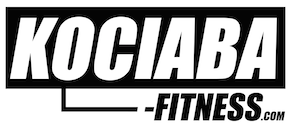Squatting for Superior Abdominal Development
Article Categories
Yes, you read that title correctly. Want powerful, well developed abs? Then I strongly suggest you put in some time doing squats!
My focus here is not ripped fitness model six pack abs, but rather a solid powerful core that will enhance your performance in any activity as well as protect your internal organs and lower back. I will address those shredded washboard abs and how to get them in a future post.
Now, back to how squatting is going to give those strong abs to you. In any squatting movement it is essential that you keep your upper body as stabilized and supported as possible. Let’s start with the basic back squat. If you don't fill your belly with air and keep constant tension in your abdomen you will not be able to support a heavy weight across your shoulders and you will collapse forward and likely injure your back. The simple act of keeping those abs contracted (flexed, not pulled in) creates a huge amount of tension in the muscle which in turn will make them stronger.
For even more intense pressure on those abs consider doing front squats either with a bar or a pair of kettlebells. By shifting the position of the weight from behind your head, as in the traditional back squat, to in front of you, you have transferred a lot of pressure off your lower back and put it squarely on your abs. If you have that weight in front of you it is even more important to have those abs as tight as you can possibly get them. If not you will simply not be able to do the movement and probably won't be able to support the weight at all.
My personal favorite version of the squat to really challenge your abs is the single kettlebell front squat. In this movement you are holding one kettlebell in the rack position (elbow tucked tightly to your side with a tight lat contraction, and your fist should be directly under your chin). Your free hand should be extended out to the side for balance. When you are squatting, the off balance effect of using only one bell forces you to fight to keep your upper body erect not just front to back, but also side to side. This causes tremendous tension through your entire abdominal region as well as throughout your hips. Remember you are essentially pulling down on the side without weight to keep the weighted side from pulling you out of alignment. It’s obvious that you must do an equal number of sets and reps on each side, unless of course you are conscious of a significant imbalance from one side to the other. In that case doing an extra set or two for the "weaker side" will balance things out in no time.
OK, so you don't use weights-only bodyweight training. It’s still important to keep those abs as tight as you can while doing squats. Keeping the upper body tight and as erect as you can will put all the work on your hips and legs where you want it. If you practice any of the one legged versions of the bodyweight squat and you don't keep those abs super tight you will not be able to keep your balance. What it all comes down to is keeping the muscles tensed as hard and as long as you can while doing big compound movements. That is the best way of increasing their strength. Squats, deadlifts and overhead pressing are the key movements for a powerful stable mid-section.
I have noticed that my abs are thicker and more dense since I started squatting and doing over-head presses again after some time away from those movements. I won't lie; you can't see my abs as there is a nice "Protective" layer of fat over them (hey! my wife is a great cook), but they are just below the surface and I have no doubt that they would look great if I got real tight with my diet and did some isolation movements to bring out the details ... but as I said, that discussion is for another post.



Comments
Workout
I am very enjoyed for this blog. It help me very much to solve some problems. Thanks a lot for sharing this with all of us. I appreciate it very much! Looking forward to another great blog! mental golf edge
Add new comment